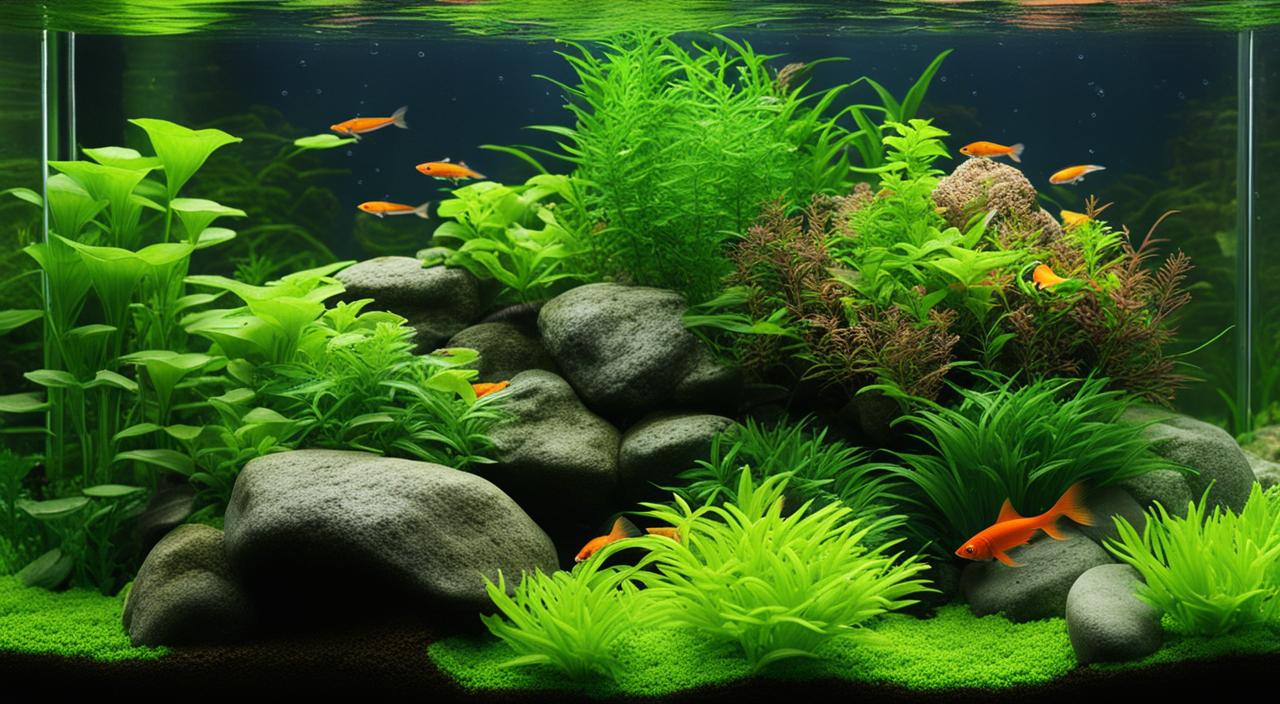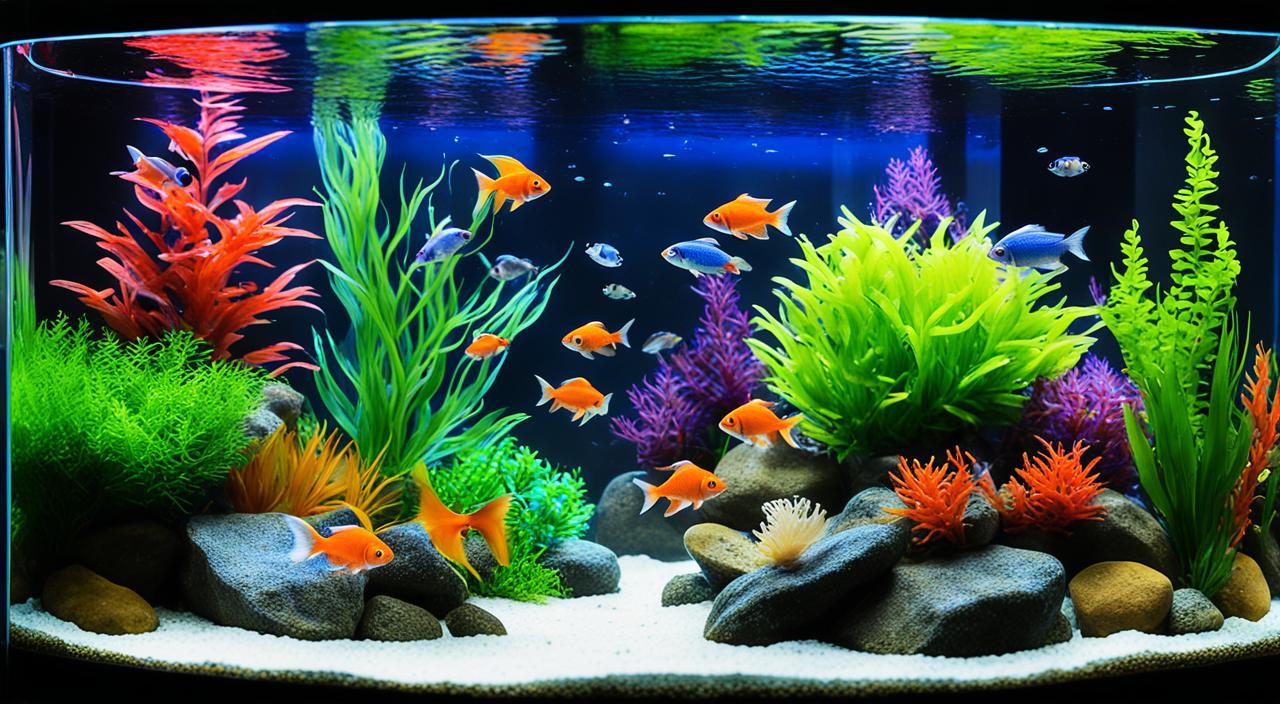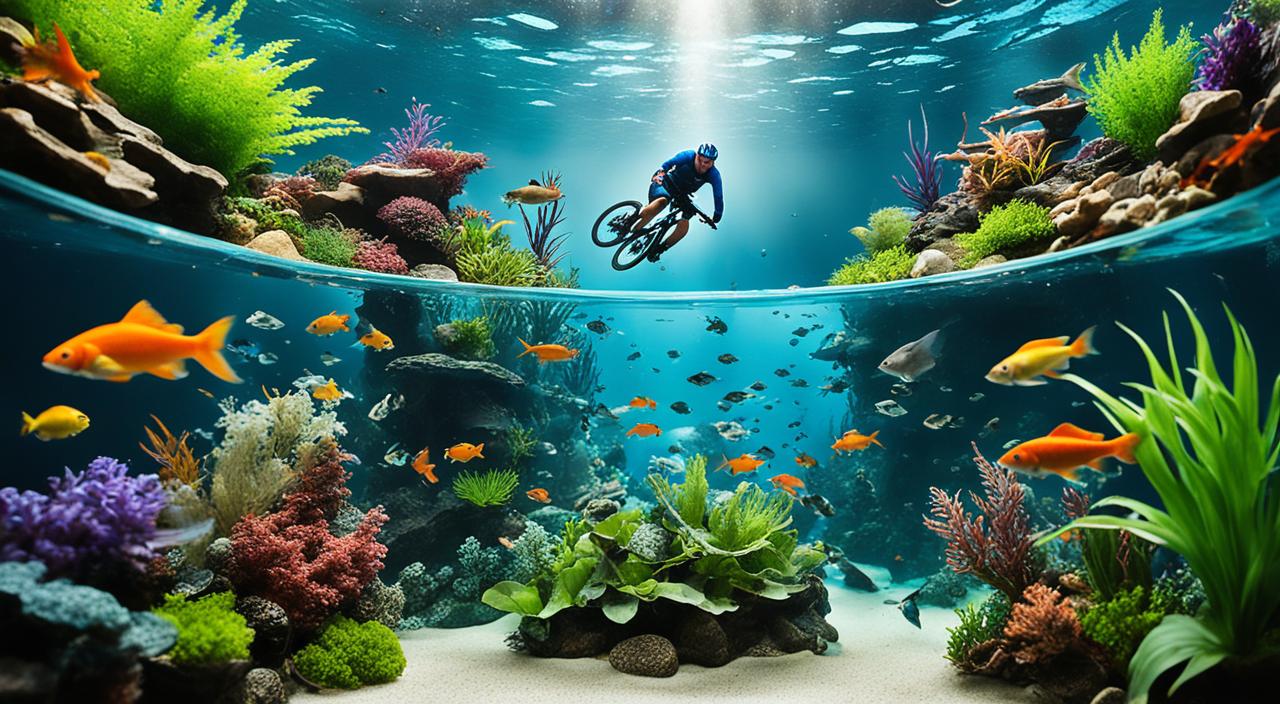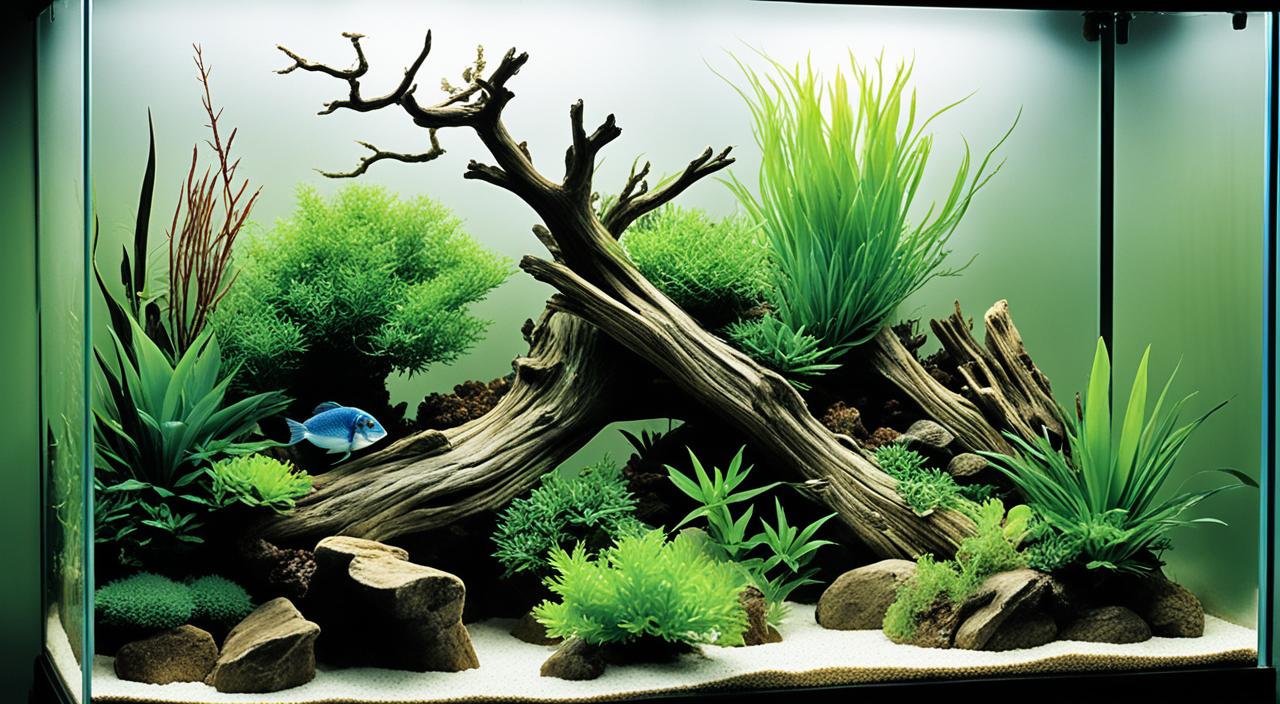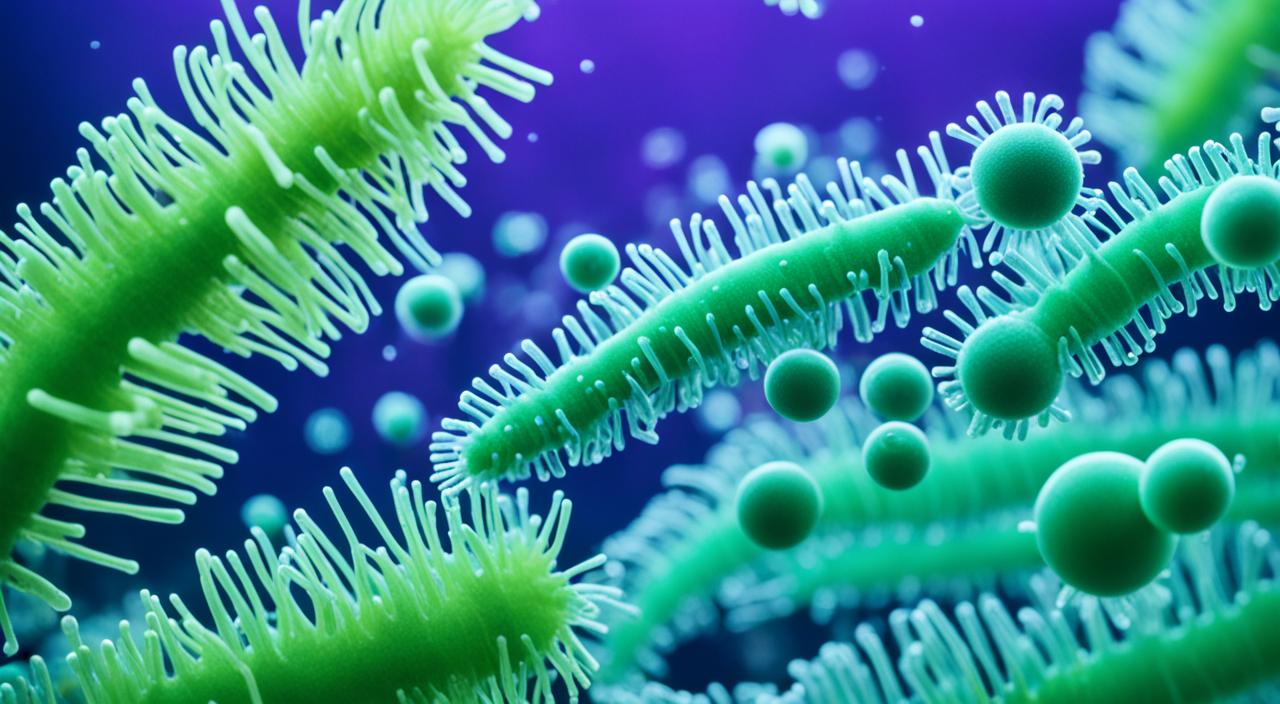Greetings! Today, I want to dive into the fascinating world of breeding tanks and discuss the crucial cycling process. Whether you’re a seasoned aquarist or just getting started, understanding the cycling process is critical to creating a safe and thriving environment for your aquatic breeders.
The nitrogen cycle, a natural process that converts and consumes nitrogen compounds, is vital in maintaining water quality in breeding tanks. By ensuring a healthy nitrogen cycle, you provide your breeders with the conditions they need to flourish and reproduce.
Key Takeaways:
- Cycling is essential for creating a safe and thriving environment in breeding tanks.
- The nitrogen cycle helps maintain water quality by converting and consuming nitrogen compounds.
- There are different fish tank cycling methods, including fish-in cycling, cycling with plants, and fishless cycling.
- Monitoring water quality using test kits and performing regular water changes are essential during cycling.
- A successfully cycled breeding tank provides a stable and healthy environment for breeders to thrive and reproduce.
Understanding the Aquarium Nitrogen Cycle
The aquarium nitrogen cycle is a natural process vital in maintaining water quality in your fish tank. It involves converting and consuming nitrogen compounds, such as ammonia, nitrites, and nitrates, by beneficial bacteria and plants. Understanding this cycle is essential for creating a healthy and thriving environment for aquatic pets.
The cycle begins with the production of ammonia, which is excreted by fish as waste and can also come from uneaten food and decaying organic matter. Beneficial bacteria, known as nitrifying bacteria, convert ammonia into nitrites, which are less harmful to fish but still toxic in high concentrations.
Once nitrites are present, another group of beneficial bacteria called nitrite-consuming bacteria, convert them into nitrates. Nitrates are less harmful than ammonia and nitrites but can still be detrimental to fish in high concentrations. Additionally, an excess of nitrates can promote algae growth, leading to water quality issues.
Plants in your aquarium also play a crucial role in the nitrogen cycle. They uptake nitrates as a nutrient source, helping to reduce their concentration in the water. This natural filtration system plants provide can help create a more stable and balanced ecosystem in your fish tank.
It’s important to note that the aquarium nitrogen cycle is not instantaneous and can take several weeks to complete. During this time, monitoring water parameters regularly using test kits and performing partial water changes to maintain optimal conditions for the fish and other aquatic organisms is crucial.
Understanding and working with the aquarium nitrogen cycle can create a healthier and more sustainable environment for your fish, promoting their well-being and overall aquatic ecosystem.
Methods for Cycling Your Aquarium
When it comes to cycling your aquarium, there are several methods that you can choose from. Each method has advantages and considerations, allowing you to find the one that suits your needs and preferences. Let’s explore three popular aquarium cycling methods: fish-in cycling, cycling with plants, and fishless cycling.
Fish-in Cycling
Fishing in cycling involves gradually adding a few hardy fish to your tank during the cycling process. These hardy fish, such as zebrafish or guppies, can tolerate the initial spike in ammonia and nitrites as the beneficial bacteria populate your tank. It is essential to closely monitor water parameters, such as ammonia and nitrite levels, and perform regular water changes to keep them at safe levels. Avoid overfeeding the fish and ensure their well-being throughout the cycling process.
Cycling with Plants
Cycling with plants is a natural and visually appealing method that involves adding live aquarium plants to your tank. These plants provide aesthetic enhancement and play a vital role in consuming nitrogen waste. Live plants absorb ammonia and nitrates, reducing their levels in the water and creating a natural ecosystem. Additionally, plants produce oxygen, which supports your aquatic inhabitants’ overall health and well-being. A beautiful underwater garden is a bonus!
Fishless Cycling
Fishless cycling is a method that does not involve adding fish to your tank during the cycling process. Instead, you introduce a source of ammonia, such as fish food or ammonia solution, to promote the growth of beneficial bacteria. These bacteria consume the ammonia and convert it into nitrites and nitrates, establishing a healthy biological filter. Fishless cycling allows you to control the process without subjecting any fish to potential stress or harm.
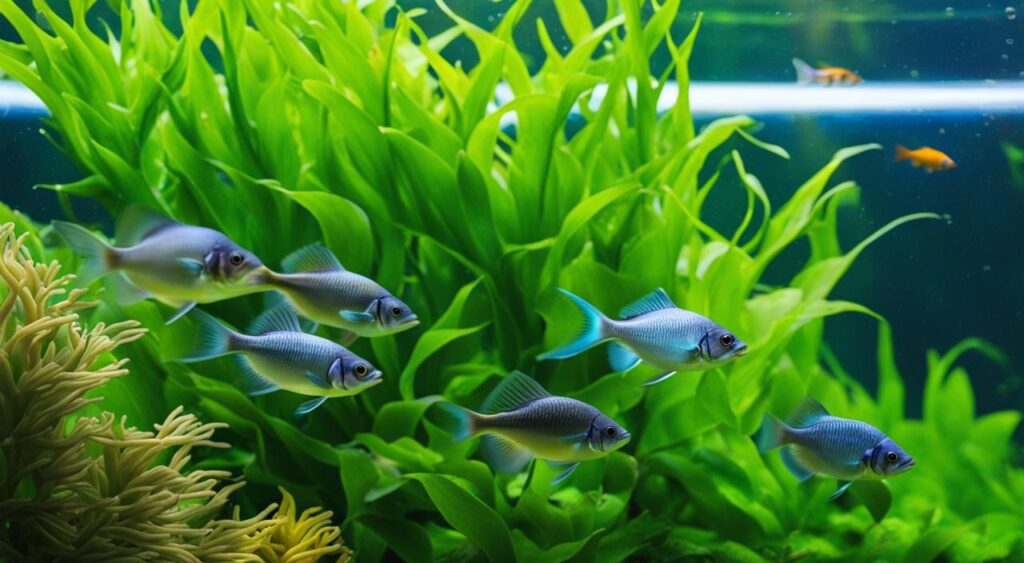
Each method has pros and cons, allowing you to choose the one that aligns with your goals and preferences. Consider factors such as the type of tank you have, the level of involvement you desire, and the time you can dedicate to the cycling process. Regardless of the method you choose, patience is critical. Allow sufficient time for the beneficial bacteria to establish and for the cycling process to complete before adding more fish to your aquarium.
Steps to Cycle Your Breeding Tank
The cycling process for a breeding tank involves several steps to establish a healthy and stable environment.
1. Set up the tank: Begin by setting up the breeding tank with all the necessary equipment, including filters, heaters, and lighting. Fill the tank with dechlorinated water to provide a suitable habitat for the aquatic breeders.
2. Choose your cycling method: Depending on your preference, you can choose between fish-in cycling, cycling with plants, or fishless cycling. Each method has advantages and considerations, so select the one that best suits your needs.
3. Introduce hardy fish or live plants: If you opt for fish-in cycling, add a small number of hardy fish to the tank. These fish will produce waste that will start the cycling process. Alternatively, you can cycle the tank with live aquatic plants, which will absorb some of the nitrogen compounds.
4. Monitor water parameters: Regularly test the water parameters using aquarium test kits. Keep an eye on the levels of ammonia, nitrites, and nitrates as they indicate the progress of the cycling process. Ensuring that the breeders’ water quality remains within acceptable ranges is essential.
5. Perform partial water changes: As the cycling progresses, you may need to perform partial water changes to dilute any accumulated toxins and maintain optimal water conditions for the breeders. This will help remove excess ammonia and nitrites from the tank.
6. Achieve stability: The cycling process is complete when ammonia and nitrite levels are undetectable, and nitrates are below a certain threshold. This indicates that the beneficial bacteria that break down harmful compounds are established and functioning correctly.
Following these steps and closely monitoring the water quality, you can successfully cycle your breeding tank and create a safe and thriving environment for your aquatic breeders.
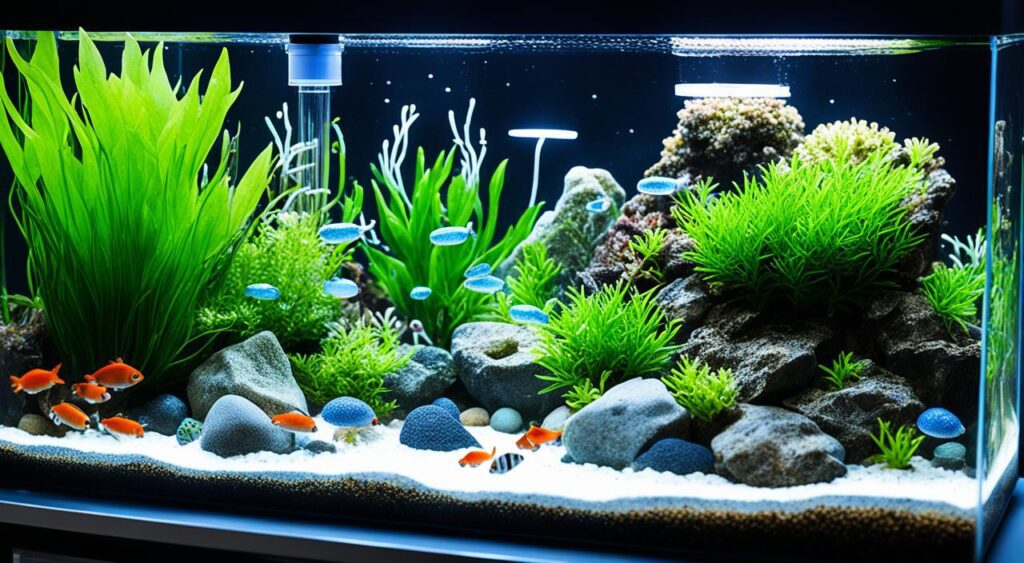
| Steps | Description |
|---|---|
| 1 | Set up the tank with necessary equipment |
| 2 | Choose your cycling method |
| 3 | Introduce hardy fish or live plants |
| 4 | Monitor water parameters |
| 5 | Perform partial water changes |
| 6 | Achieve stability |
Maintaining Water Quality During Cycling
Maintaining water quality is paramount during the cycling process to ensure a healthy and thriving environment for your aquatic breeders. Proper maintenance involves monitoring key water parameters, conducting regular testing, and performing necessary water changes.
Monitoring Water Parameters
To gauge the progress of the cycling process, it is essential to monitor water parameters such as ammonia, nitrites, and nitrates. Test kits are a valuable tool for accurate and reliable measurement. Regularly assess the levels of these compounds to ensure they are within safe limits, as high concentrations can be harmful to your breeders.
Water Testing During Cycling
Regular water testing is crucial to assess the effectiveness of the cycling process. Conduct tests at regular intervals, preferably weekly, to track any changes in ammonia, nitrites, and nitrates. By closely monitoring these parameters, you can identify potential issues and take appropriate actions to maintain a healthy cycling environment.
Water Changes During Cycling
Performing partial water changes is vital in maintaining water quality during cycling. These changes help to remove accumulated toxins, dilute harmful substances, and provide fresh, clean water for your breeders. To ensure optimal water conditions, aim to replace about 10-25% of the tank’s volume with dechlorinated water regularly, preferably weekly.
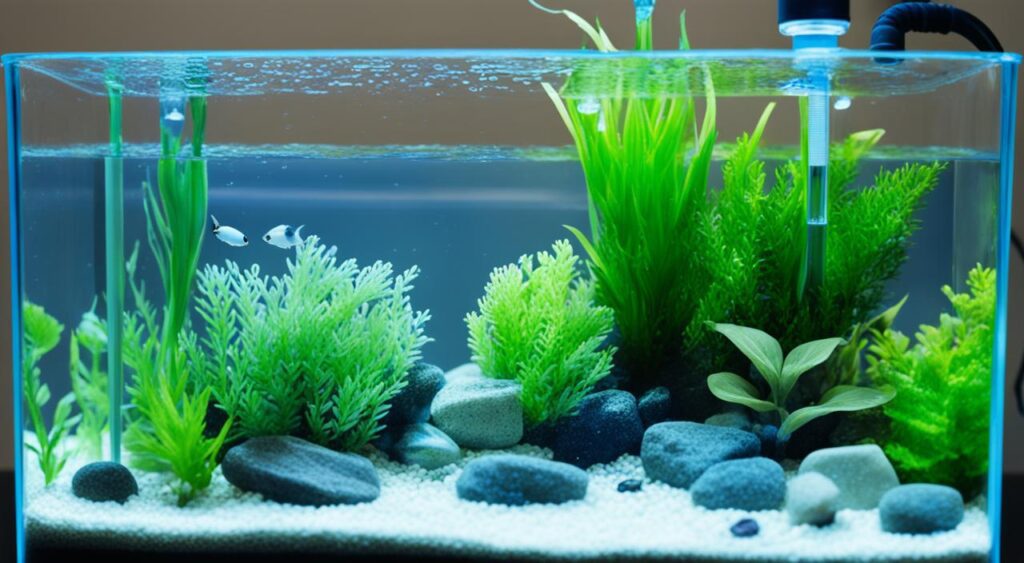
| Water Parameter | Ideal Range | Actions to Take |
|---|---|---|
| Ammonia | Near zero | If ammonia levels rise, perform water changes and ensure proper filtration. Avoid overfeeding and monitor waste accumulation. |
| Nitrites | Near zero | If nitrite levels are elevated, continue regular water changes and monitor ammonia levels. Ensure proper biological filtration. |
| Nitrates | Below 40 ppm | If nitrate levels exceed the desired range, increase the frequency of water changes. Consider adding live plants to help absorb excess nitrates. |
Benefits of a Successfully Cycled Breeding Tank
Cycling a breeding tank offers various advantages that create a thriving environment for breeders and contribute to the overall health of the aquatic ecosystem. A successfully cycled tank provides stability and promotes the well-being of breeders, allowing them to thrive and reproduce.
One of the key benefits of cycling a breeding tank is establishing a balanced ecosystem. During cycling, beneficial bacteria and plants develop, breaking down waste and maintaining optimal water quality. This helps to create a thriving environment where breeders can flourish.
Cycling also dramatically reduces the risk of ammonia and nitrite poisoning, which can harm the breeders. Ammonia and nitrites are toxic substances that can accumulate in an uncycled tank. However, through the cycling process, these harmful compounds are converted into less harmful nitrates, ensuring the health and vitality of the breeders.
By following the proper cycling process and maintaining water quality, breeders can provide a safe and thriving environment for their aquatic breeders. Cycling a breeding tank benefits the breeders themselves and contributes to the overall success and well-being of the aquatic ecosystem in the tank.
FAQ
What is the cycling process for breeding tanks?
The cycling process involves establishing a healthy and stable environment in breeding tanks by allowing the nitrogen cycle to occur. This process converts and consumes nitrogen compounds, ensuring optimal water quality for the breeders.
What is the aquarium nitrogen cycle?
The aquarium nitrogen cycle is a natural process where bacteria and plants convert and consume nitrogen compounds, such as ammonia, nitrites, and nitrates. This cycle breaks down fish waste and helps maintain water quality in the tank.
What are the methods for cycling an aquarium?
There are three main methods for cycling an aquarium: fish-in cycling, cycling with plants, and fishless cycling. Fish-in cycling involves adding a few hardy fish to the tank, while cycling with plants involves adding live aquarium plants to consume nitrogen waste. Fishless cycling utilizes a source of ammonia to grow beneficial bacteria without adding fish.
How can I cycle my breeding tank?
To cycle your breeding tank, start by setting it up with all necessary equipment and dechlorinated water. You can then add a small number of hardy fish or live plants, depending on your chosen cycling method. Monitor water parameters regularly and perform partial water changes to maintain optimal water quality until ammonia and nitrite levels are undetectable, and nitrates are below a certain threshold.
How do I maintain water quality during the cycling process?
It is crucial to monitor water parameters such as ammonia, nitrites, and nitrates using test kits. Regular water testing allows you to assess the progress of the cycling process and determine when it is safe to add more fish or increase the bio-load. Additionally, performing partial water changes helps remove accumulated toxins and provide fresh, clean water for the breeders.
What are the benefits of a successfully cycled breeding tank?
A successfully cycled breeding tank provides a stable and healthy environment in which breeders can thrive and reproduce. It establishes a balanced ecosystem with beneficial bacteria and plants that break down waste and maintain optimal water quality. Cycling reduces the risk of ammonia and nitrite poisoning, ensuring the health and well-being of the breeders.

